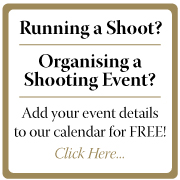Woodpigeon Shooting
Legal issues with shooting pigeons must be observed, below is an overview - please contact BASC for any advice.
Woodpigeon shooting is controlled by the Wildlife and Countryside Act 1981 in Britain and the Wildlife (Northern Ireland) Order 1985 in Northern Ireland. Woodpigeons may be killed or taken by authorised persons at all times. It is strictly prohibited to use any sound recording or live bird as a decoy. Currently woodpigeon shooting continues under general licences issued by Defra for England and Welsh Assembly Wales, the Scottish Executive Environment Group for Scotland and the Environment and Heritage Service for N. Ireland. No individual application is required for any licence. These licences authorise shooting for the purposes of preventing serious damage to livestock, foodstuffs for livestock, crops, vegetables and fruit, recognition must be given to this condition.
Woodpigeon Shooting
The woodpigeon (Columba palumbus) is Britain’s major agricultural bird pest; it provides excellent shooting and is important to many sportsmen and farmers. It is legal to shoot the bird all the year round. The woodpigeon makes good eating and provides nourishing cheap food.
Decoying
Woodpigeon decoying is the art of building a hide on a field where pigeons are feeding and using artificial or dead bird decoys to attract pigeons to within shotgun range (20 to 35 yards). The sport requires considerable reconnaissance and much patience and fieldcraft to achieve results.
Hides may be built with camouflage nets, straw bales or natural cover. When using bales remember to ask the farmer’s permission to move them and always replace them after the shoot. Natural hides are made with materials found on the farm and should be dismantled at the end of the shooting day. Do not cut into hedgerows or otherwise damage the farmer’s property. The hide should be large enough (3ft. square) to accommodate the shooter, his dog and equipment, and have as level a floor as possible.
Flighting
Shooting pigeons on flightlines is very popular and, after reconnaissance has determined the line of flight, Guns stand concealed on the edges of woods or in hedgerows and shoot passing birds without the aid of decoys.
Roost shooting
For roost shooting Guns position themselves before dusk in woods where pigeons are known to roost during the winter and wait for the birds to return from their day’s feeding. Mixed woods of conifers and hardwoods are the most popular and pigeon droppings under the trees will show the places to stand. As it will be almost dark before the shoot ends fallen birds should be retrieved immediately.








